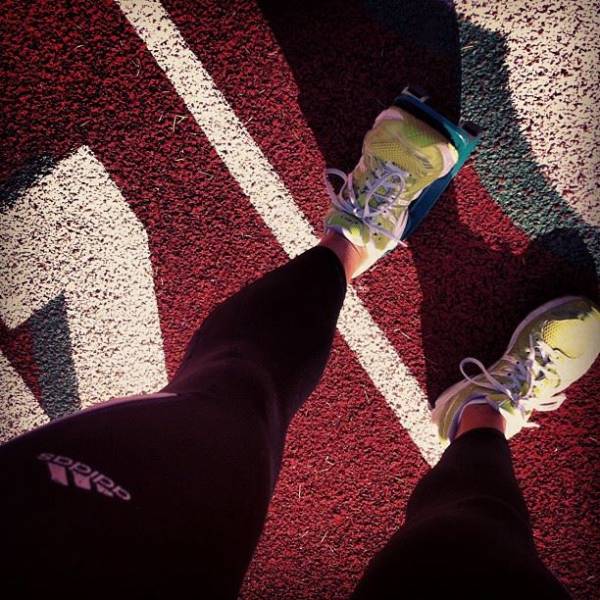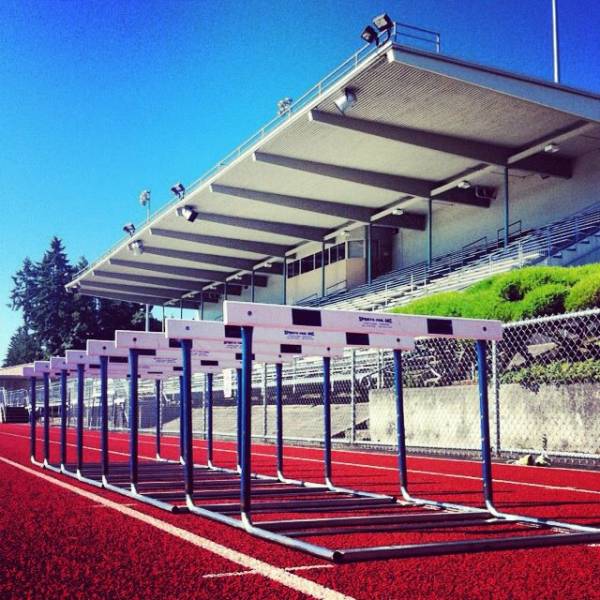Why Sprint Training Is the Best Abdominal Workout
There are so many great abdominal workouts out there and in the gym that are based around resistance training, but very few of these will give you the same overall results for tone, fitness, explosivity, speed, and the physique that sprinting does.
With the added benefit of building muscle along with speed, sprinting helps you build and define the glutes, hamstrings, and quads, while at the same time burning off the fat layers that hide the muscles underneath.
Sprint training is the most explosive training you can do. What does explosivity have to do with abdominal strength and tone? First we have to realize that what we are referring to here is not just showing up on the track to run a few laps, but rather we are talking about high-intensity, all-out sprinting and becoming more and more proficient at it as you do so. The more proficient you become at high intensity sprinting, the more you properly engage the muscles involved, such as legs and glutes – and of course the core.
Abdominal Speed
Consider this: You can work your abs 57-60 times every 100m. A world-class sprinter covers 100 meters in about 44 to 47 steps and the average person would probably cover that distance in about 57 to 60 steps. There is a very powerful combination during sprint training of power output, aggression and relaxation, engagement, constant tension, efficiency, technique, and efficiency in technique.
The more sprinting you do (while maintaining a helpful low body fat percentage), the more toned your abdominal muscles will be. Notice the abs of Olympic sprinters. Rarely are ab workouts the top priority of world-class sprinters and that is because their cores are built on the track. Keep in mind that you do not have to run as fast as Olympic sprinters to get these results but you do need to sprint your fastest in order to create the same benefits.

The Fat Factor
Sprinting does two great things for fat and abs. First, high-intensity sprint work increases the rate of metabolism and, second, it makes it last. In other words, calories continue burning long after a sprint session is completed. Fat is the extra layer we all hate most that hides muscle we would love to show off the most. Sprinting burns it off while simultaneously building up and toning the muscle underneath. It’s your perfect scenario.
Beat the Boredom
Everyone needs to change up their workouts and training once in a while. What better way to do that than to get outside, leave the confines of the gym, and get your booty and abs out on the track. Learn about the drills, the benefits of speed drills, how to incorporate sprint work properly (interval training, speed training, etc.), and start feeling the results almost immediately.
Some Helpful Coaching Tips:
1. Start and finish well. Always start and end with a few warm up or cool down laps and a good stretch. Pay extra attention to those quads, calves, and hamstrings. Roll out the back and get a good arm stretch also. Arms and are the takeads-platform-verifications for the legs. Don’t neglect them.
 2. Do drills. Incorporate hurdle drills and other variety drills on the turf or track (high knees, butt-kicks, skipping, bounding jumps, accelerations, bunny hops, etc.) These are typically performed in 30m distances. Drill down and walk back to start. Repeat a few at a time. Do not rush the warm-up. These are key to preventing tweaks and pulled muscles. Keep the core nice and tight throughout.
2. Do drills. Incorporate hurdle drills and other variety drills on the turf or track (high knees, butt-kicks, skipping, bounding jumps, accelerations, bunny hops, etc.) These are typically performed in 30m distances. Drill down and walk back to start. Repeat a few at a time. Do not rush the warm-up. These are key to preventing tweaks and pulled muscles. Keep the core nice and tight throughout.
3. Remember your low back and core. The most important tool for all sprinters – and all athletes, and pretty much everyone – is a strong low back. Sprinting builds a strong low back and core. Add in slow supermans and GHD work, and really focus on the posterior chain in the gym. Pay close attention to building up the muscles around the spine and hips. This helps build speed and also with prevention of injuries or tweaks.
4. Mind your diet. Properly feed the muscles that move you. Protein is key here. Prevent weight gain especially around the midsection that we are aiming to define. Hydrate.
 5. Wear proper shoes. When ready, I highly recommend a good pair of spikes for sprint work. All other drills and running should be done in running shoes, but there is a lot of benefit in wearing spikes, as the front of the foot gets maximum traction for the press (see #8 below). With a strong connection to the ground, the core must work harder to push and keep the midline tight and secure.
5. Wear proper shoes. When ready, I highly recommend a good pair of spikes for sprint work. All other drills and running should be done in running shoes, but there is a lot of benefit in wearing spikes, as the front of the foot gets maximum traction for the press (see #8 below). With a strong connection to the ground, the core must work harder to push and keep the midline tight and secure.
6. Control your core. Engage the core and low back the entire time and do not collapse either one. Keep the chest upright, engaging the core. Even in the forward lean required by sprinting, do not lose core control.
7. Use the arms. The arms move the legs and should be at a 90-degree angle at all times. Stair drills are great training for this and are all about the arms more than the legs (contrary to what most people think)
8. Push versus pull. Run in such a manner as to push away from the ground from the hip – pushing backwards versus pulling from the front to the back. Most hamstring pulls and tears occur from not doing this properly.
 9. Take it outside. Include resistance training either in the gym or on the track or even both. Don’t be afraid to bring kettlebells, dumbbells, and medicine balls to the track with you and incorporate them. Be creative and don’t be afraid to do your entire day’s workout on the track.
9. Take it outside. Include resistance training either in the gym or on the track or even both. Don’t be afraid to bring kettlebells, dumbbells, and medicine balls to the track with you and incorporate them. Be creative and don’t be afraid to do your entire day’s workout on the track.
10. NEVER STOP ON A DIME. FINISH THROUGH THE LINE! Don’t slow down until after running through the line – even in drills. Stopping suddenly before or after crossing your line and turning back causes more injury than anything else. Run through the line and finish the “race,” then slow it down from sprint to run to jog, and to a walk. Recoup, shake it out, and walk back.
Check out these related articles:
- Sprinting 101: 10 Articles for Safe and Effective Sprint Training
- Weighted Sled Tows Improve Performance Over Sprinting Alone
- Scientifically-Proven Tips for Faster Sprinting
- What’s New On Pulse Beat Fit Today
Photographs courtesy of Katie Chasey.






